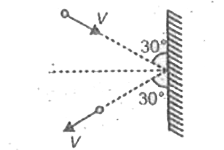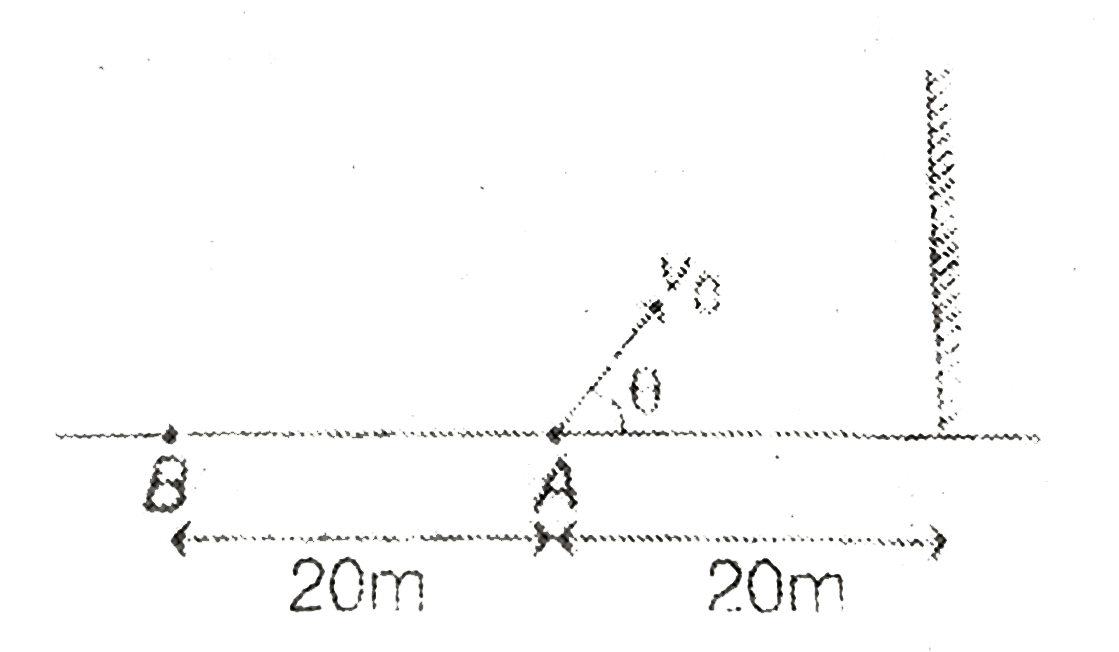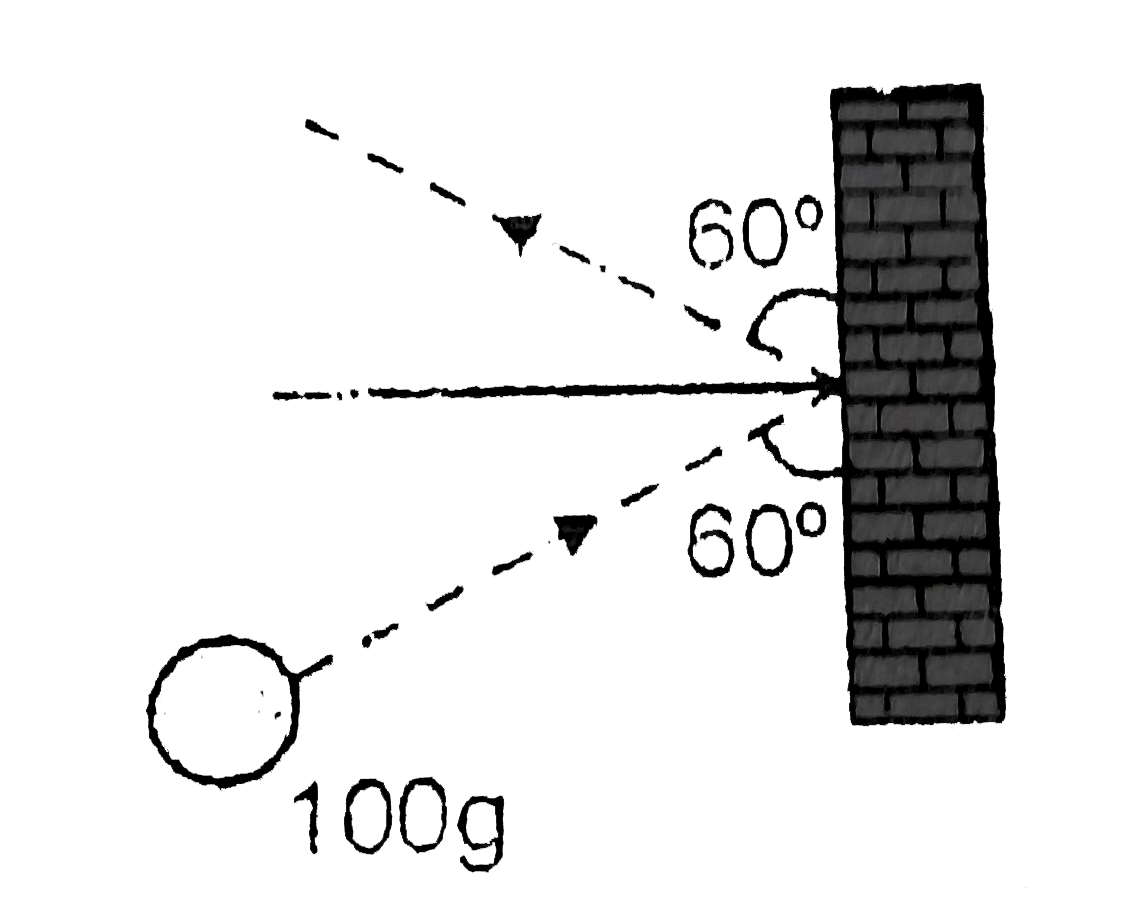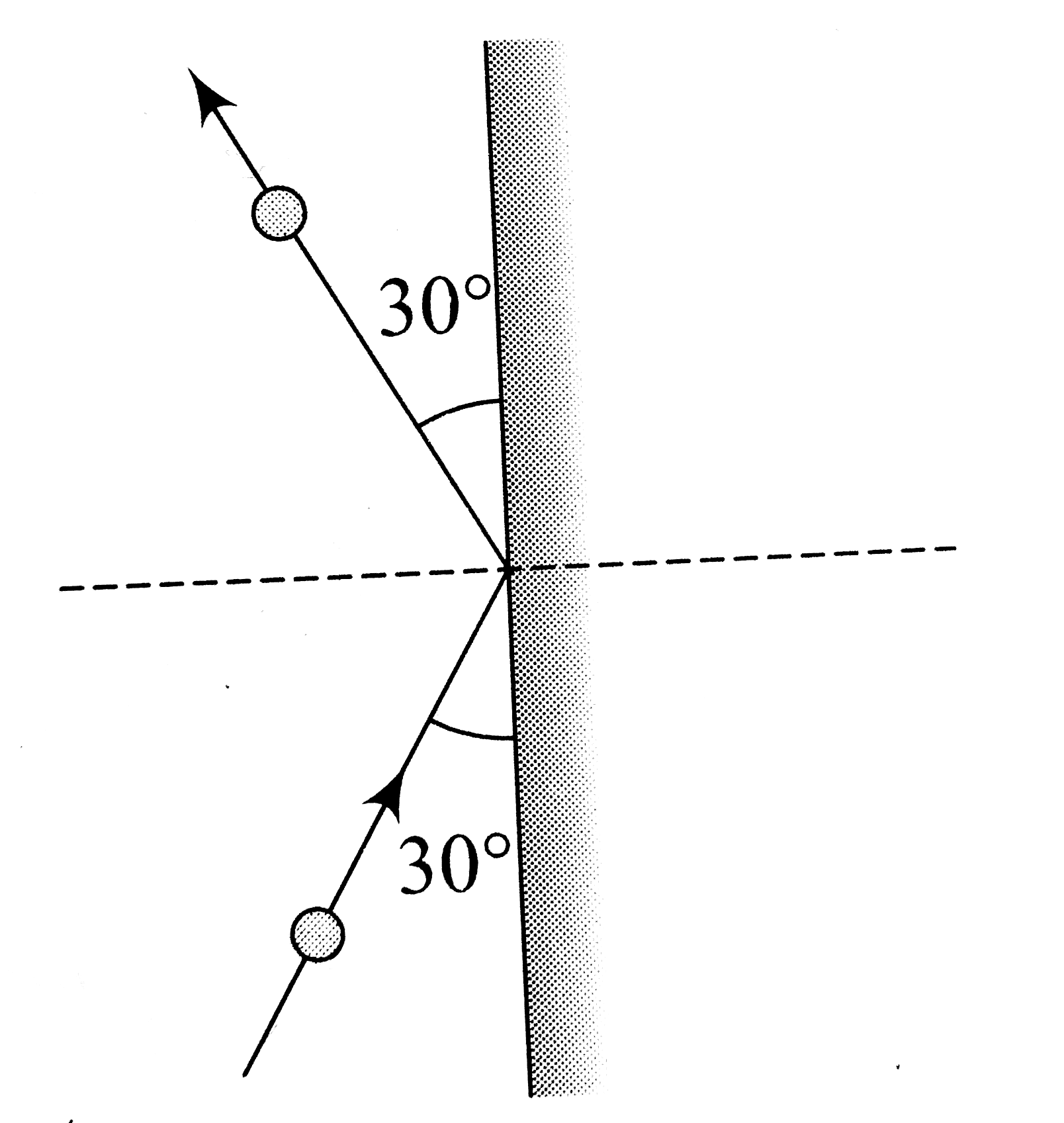A massive vertical wall is approaching a man at a speed . When it is at a distance of 10m, the man throws a ball with speed 10 m/s at an angle of , which after having a completely elastic collision with the wall, reaches back directly into the hands of the man. The velocity of the wall is
m/s
m/s
m/s
The correct Answer is:A
To solve the problem step by step, we will analyze the motion of the ball and the wall, applying the principles of projectile motion and the conservation of momentum.
Step 1: Break down the initial velocity of the ball
The man throws the ball with a speed of 10 m/s at an angle of 37 degrees. We need to find the horizontal and vertical components of this velocity.
- Horizontal component (Vbx):
Vbx=Vbcos(37∘)=10⋅cos(37∘)=10⋅35=6 m/s
- Vertical component (Vby):
Vby=Vbsin(37∘)=10⋅sin(37∘)=10⋅45=8 m/s
Step 2: Calculate the time of flight until the ball returns
The ball will reach its maximum height and then return to the same vertical level. The time to reach the maximum height can be calculated using the vertical component of the velocity.
Using the formula for time of flight in projectile motion:
t=2Vbyg
where g≈10 m/s2 (acceleration due to gravity).
Substituting the values:
t=2⋅810=1.6 seconds
Step 3: Calculate the distance traveled by the ball horizontally
During the time of flight, the horizontal distance covered by the ball can be calculated using:
Distance=Vbx⋅t
Substituting the values:
Distance=6⋅1.6=9.6 meters
Step 4: Determine the distance the wall travels during the time
The wall is approaching the man at a speed μ. In the same time t, the wall will cover a distance:
Distancewall=μ⋅t
Step 5: Set up the equation for the total distance
Initially, the distance between the man and the wall is 10 meters. The ball travels 9.6 meters towards the wall, and the wall travels μ⋅t meters towards the man. Therefore, we can set up the equation:
10=9.6+μ⋅t
Step 6: Substitute the time and solve for μ
Substituting t=1.6 seconds into the equation:
10=9.6+μ⋅1.6
Rearranging gives:
μ⋅1.6=10−9.6=0.4
μ=0.41.6=0.25 m/s
Step 7: Final calculation
The wall's velocity μ is:
μ=0.25 m/s
Conclusion
The velocity of the wall is μ=0.25 m/s.
---
The man throws the ball with a speed of 10 m/s at an angle of 37 degrees. We need to find the horizontal and vertical components of this velocity.
Vbx=Vbcos(37∘)=10⋅cos(37∘)=10⋅35=6 m/s
Vby=Vbsin(37∘)=10⋅sin(37∘)=10⋅45=8 m/s
The ball will reach its maximum height and then return to the same vertical level. The time to reach the maximum height can be calculated using the vertical component of the velocity.
t=2Vbyg
where g≈10 m/s2 (acceleration due to gravity).
t=2⋅810=1.6 seconds
During the time of flight, the horizontal distance covered by the ball can be calculated using:
Distance=Vbx⋅t
Substituting the values:
Distance=6⋅1.6=9.6 meters
The wall is approaching the man at a speed μ. In the same time t, the wall will cover a distance:
Distancewall=μ⋅t
Initially, the distance between the man and the wall is 10 meters. The ball travels 9.6 meters towards the wall, and the wall travels μ⋅t meters towards the man. Therefore, we can set up the equation:
10=9.6+μ⋅t
Substituting t=1.6 seconds into the equation:
10=9.6+μ⋅1.6
Rearranging gives:
μ⋅1.6=10−9.6=0.4
μ=0.41.6=0.25 m/s
The wall's velocity μ is:
μ=0.25 m/s
The velocity of the wall is μ=0.25 m/s.
Similar Questions
A particle of mass m strikes a wall with speed v at an angle 30∘ with the wall elastically as shown in the figure. The magnitude of impulse imparted to the ball by the wall is

View SolutionA ball of mass m approaches a wall of mass M (M>>m), with speed 2 ms−1 along the normal to the wall. The speed of wall is 1 ms−1 towards the ball. The speed of the ball after an elastic collision with the wall is-
View SolutionA ball is projected from the floor of a cabin of height 7m with speed 20 m/s at an angle of 37∘ with the floor of cabin. It makes a successive collision with the wall of cabin and then return again to its floor. Assume all collisions are perfectly elastic. Find time taken (in sec) by the ball to reach the floor after collisions with the ceiling of cabin.
View SolutionA ball is thrown at a speed of 20 m/s at an angle of 30∘ with the horizontal . The maximum height reached by the ball is
(Use g=10m/s2)
View SolutionA 3.00kg steel hall strikes the wall with a speed of 10.0m/s at an angle of 60∘ with the surface. It bounces off with the same speed and angle. If the ball is in contact with the wall for 0.200s, what is the average force exerted by the wall on the ball?
View SolutionA molecules in a gas container hits the wall with speed 200m/s at an angle 30∘ with the normal, and reboudns with the same speed. Is momentum conserved in the collision ? Is the collision elastic or inelastic ?
View SolutionIn the figure shiown a stationary boy (at a poing A ) throws a ball towards a fixed wall which is 20 m away from him. The ball hits the wall elastically and hits the ground at the point B, 20 m behind the boy. The total tiem elapsed id T1 The boy again throws the ball with same speed but at different angle from same point A towards the wall and after collision with the wall ball lands at same point B. But this time elapsed is T2.If (T2−T1) = 1s, choose the correct potions.

View SolutionA mass of 100 g strikes the wall with speed 5m/s at an angle as shown in figure and it rebounds with the same speed it the contact time is 2×10−3sec. What is the force applied on the mass by the wall :

View SolutionA 0.5kg ball moving with a speed of 12m/s strikes a hard wall at an angle of 30∘ with the wall. It is reflected with the same speed and at the same angle . If the ball is in contact with the wall for 0.25s, the average force acting on the wall is

View SolutionA ball is shot in a long hall having a roof at a height of 10m with 25m/s at an angle of 37∘ with the floor. The ball lands on the floor at a distance of ………………….. from the point of projection. ( Assume elastic collisions if any )

View Solution
